The Vervain Hummingbird, scientifically known as Mellisuga minima, is a diminutive marvel among avian species, renowned for its petite stature and vibrant plumage.
Native to the Caribbean islands, this tiny hummingbird, also referred to as the Bee Hummingbird, holds the distinction of being the world’s smallest bird.
Measuring a mere 2 to 2.4 inches (5 to 6 cm) in length, the male Vervain Hummingbird boasts iridescent plumage in hues of green, blue, and fiery red, captivating observers with its striking beauty.
Equipped with remarkable agility and unmatched hovering capabilities, it feeds primarily on nectar from various flowering plants, sustaining its rapid metabolism.
The female, while less flamboyant, possesses a subtle charm with her greenish-gray feathers.
Facing habitat challenges and ecological shifts, the Vervain Hummingbird symbolizes the delicate balance of nature and underscores the importance of conservation efforts to safeguard its unique existence.
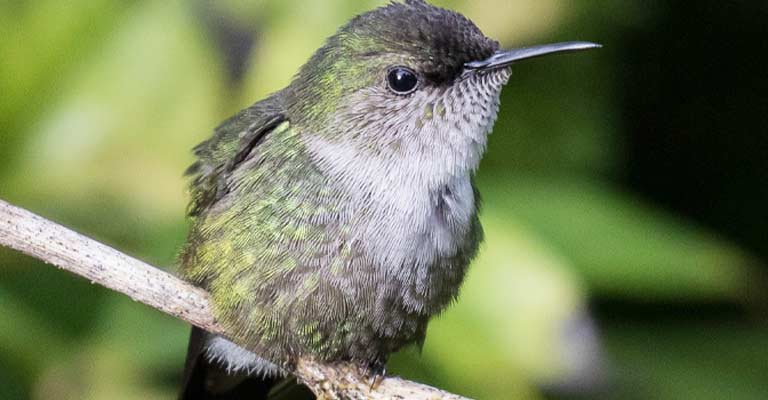
Identifying Characteristics of Vervain Hummingbird
The identification of the Vervain Hummingbird, also known as the Bee Hummingbird, involves a keen eye for subtle yet distinctive characteristics that set this diminutive avian marvel apart from its counterparts.
Measuring a mere 2 to 2.4 inches (5 to 6 cm) in length, the male and female exhibit unique features that make them easily recognizable.
Size and Stature
The first and most striking characteristic of the Vervain Hummingbird is its petite size. Among the smallest birds globally, its length is comparable to that of an average paperclip.
This miniature stature immediately distinguishes it from other hummingbird species.
Male Plumage
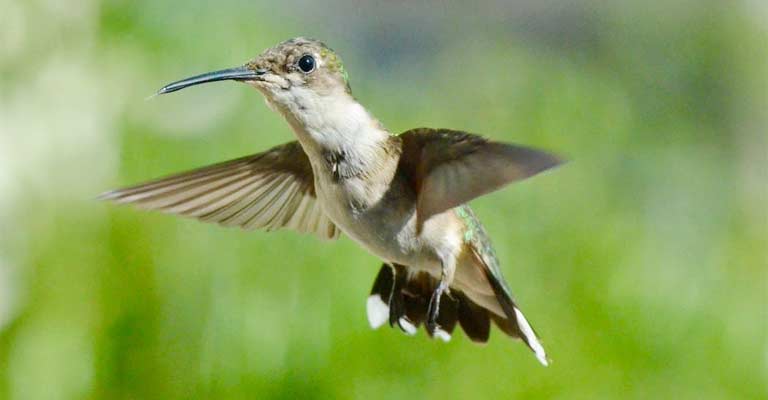
The male Vervain Hummingbird is adorned with vibrant, iridescent plumage. Its body exhibits a dazzling array of colors, including shades of green, blue, and fiery red.
This kaleidoscope of hues creates a mesmerizing effect, particularly when the sunlight catches its feathers during flight.
Distinctive Bill
Both male and female Vervain Hummingbirds possess a slender, slightly curved bill that aids in their feeding habits.
The bill is adapted for probing deep into flowers to extract nectar, showcasing a specialized feature crucial for their survival.
Forked Tail
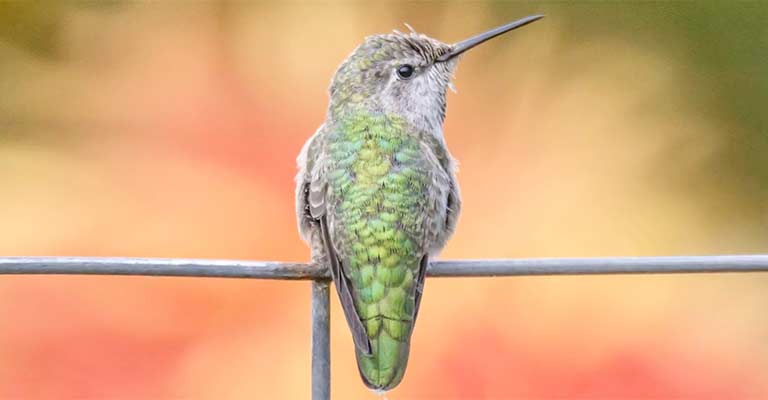
A key identifier is the distinct forked tail of the Vervain Hummingbird, which sets it apart from other hummingbird species.
This forked configuration adds to the bird’s agility in flight, allowing for precise maneuvers during feeding and courtship displays.
Male’s Fiery Throat Patch
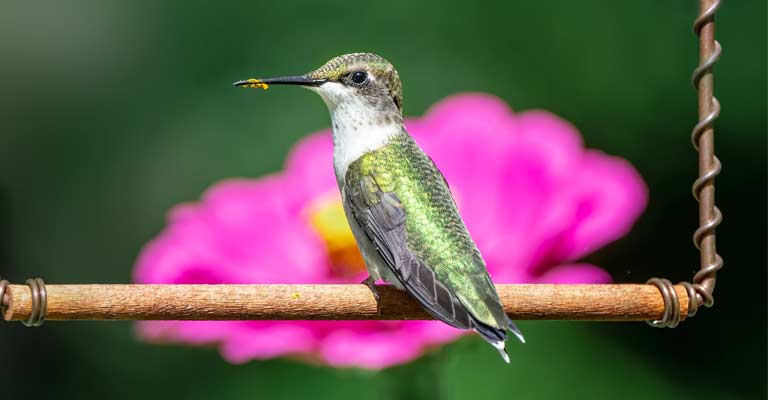
One of the most remarkable features of the male Vervain Hummingbird is its vibrant throat patch, which takes on a fiery red or orange hue.
This patch becomes especially conspicuous during courtship displays, where the male aims to attract a mate through aerial acrobatics.
Female’s Subtle Elegance
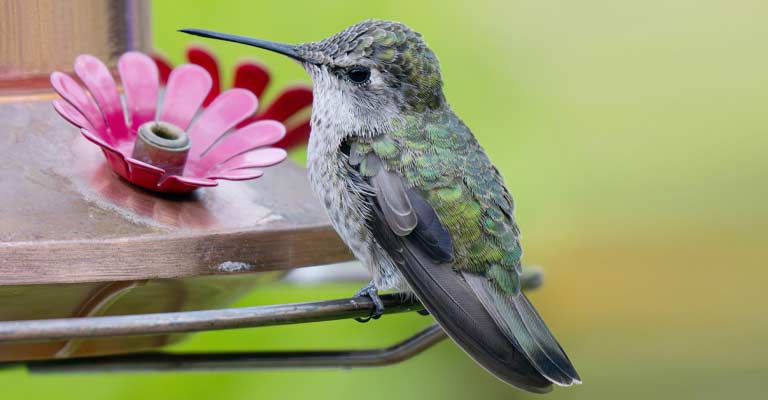
While the female lacks the flamboyant colors of the male, she possesses a subtle beauty with her greenish-gray plumage. Her understated appearance serves as a natural adaptation for camouflage, offering protection while nesting.
Hovering Abilities
The Vervain Hummingbird showcases exceptional hovering abilities, a characteristic shared by most hummingbirds. This unique skill allows the bird to remain suspended in mid-air while feeding, providing a distinct visual cue for identification.
Distinctive Vocalizations
Although visually stunning, the Vervain Hummingbird is not known for elaborate vocalizations.
However, its soft chirps and buzzes, especially during territorial disputes or courtship rituals, contribute to the auditory dimension of identification.
The identification of the Vervain Hummingbird involves a holistic approach that considers its size, plumage, tail structure, bill morphology, and behavioral aspects.
Appreciating these distinctive characteristics contributes to a deeper understanding of this extraordinary species in the avian kingdom.
Taxonomy of Vervain Hummingbird
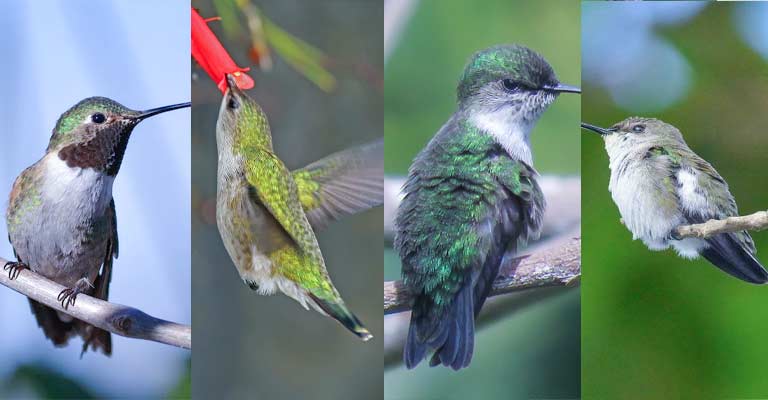
Here is a table summarizing the taxonomy details of the Vervain Hummingbird (Mellisuga minima):
| Taxonomic Rank | Classification |
| Domain | Eukaryota |
| Kingdom | Animalia |
| Phylum | Chordata |
| Class | Aves |
| Clade | Strisores |
| Order | Apodiformes |
| Family | Trochilidae |
| Genus | Mellisuga |
| Species | M. minima |
This table outlines the hierarchical classification of the Vervain Hummingbird, starting from the broadest taxonomic categories and progressing to more specific ones.
The Vervain Hummingbird belongs to the Animalia kingdom, Aves class, Apodiformes order, Trochilidae family, Mellisuga genus, and M. minima species.
The Vervain Hummingbird (Mellisuga minima) belongs to the Animalia kingdom, Aves class, and Apodiformes order. It is classified under the Trochilidae family, known for hummingbirds.
Within this family, the Vervain Hummingbird is specifically categorized under the Mellisuga genus and M. minima species. This tiny marvel is characterized by its diminutive size, vibrant plumage, and remarkable hovering abilities.
Its taxonomy reflects its place in the intricate web of avian life, highlighting its unique features within the broader classifications of the animal kingdom.
Vervain Hummingbird Life History
The life history of the Vervain Hummingbird (Mellisuga minima) unfolds as a fascinating tapestry of adaptation and resilience. This diminutive bird, renowned as the world’s smallest, navigates its existence with remarkable prowess.
From its dietary preferences and habitat choices to nesting habits, breeding strategies, and conservation challenges, every aspect of the Vervain Hummingbird’s life provides insights into the intricacies of its survival in the Caribbean ecosystems.
Food

The Vervain Hummingbird sustains itself primarily on nectar from a diverse array of flowering plants. Its specialized bill allows it to probe deep into blossoms to extract nectar, while its rapid metabolism demands a high energy intake.
In addition to nectar, the hummingbird supplements its diet with small insects and spiders, providing essential proteins and nutrients.
Habitat
This tiny marvel predominantly inhabits tropical and subtropical regions, favoring lush, flowering landscapes. Its habitat includes gardens, forest edges, and meadows where an abundance of nectar-rich blooms thrive.
The Vervain Hummingbird’s adaptability allows it to traverse various ecosystems, showcasing a resilience vital for its survival.
Range Map
The Vervain Hummingbird’s range extends across the Caribbean islands, with notable populations found in Cuba, Isla de la Juventud, and the Isle of Pines.
A distribution map illustrates its presence in specific regions, emphasizing its localized yet strategic occupancy within the broader expanse of the Caribbean.
Nesting
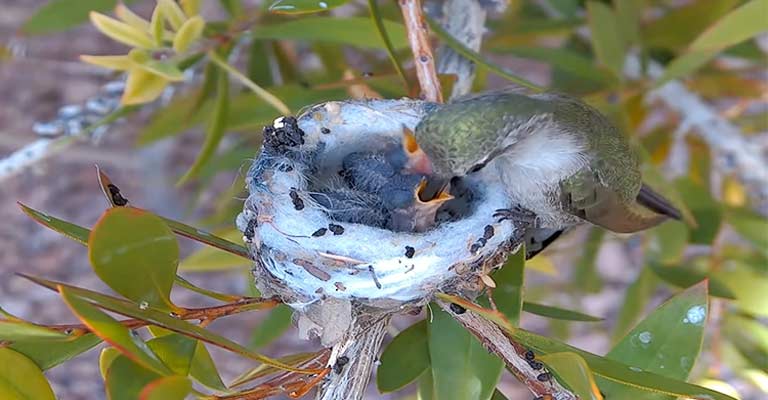
Nesting is a meticulous affair for the Vervain Hummingbird. The female constructs a compact cup-shaped nest using plant fibers, soft materials, and spider silk, camouflaging it amidst foliage.
The nest, often built on slender branches, provides a secure haven for the eggs and later, the fledglings.
Here’s a table summarizing nesting details of the Vervain Hummingbird (Mellisuga minima):
| Nesting Details | Facts |
| Clutch Size | Usually consists of 2 tiny eggs |
| Number of Broods | Typically raises 1 brood per breeding season |
| Egg Length | Approximately 1 cm (0.4 inches) |
| Egg Width | Around 0.6 cm (0.2 inches) |
| Incubation Period | Lasts about 16-22 days |
| Nestling Period | Approximately 20 days |
| Egg Description | Tiny, white or off-white with a smooth surface |
| Nest Construction | Compact cup-shaped nest secured on slender branches |
| Nest Materials | Constructed using plant fibers, soft materials, and spider silk |
| Parental Involvement | Both males and females contribute to incubation and chick-rearing |
| Nest Location | Hidden amidst foliage for camouflage and protection |
Breeding
During the breeding season, male Vervain Hummingbirds engage in elaborate courtship displays to attract females.
The male’s fiery throat patch becomes a focal point in these displays, showcasing vibrant colors as he performs intricate aerial maneuvers.
After successful courtship, the female lays a clutch of two tiny eggs, and both parents contribute to incubation and chick-rearing responsibilities.
Diseases
Like many avian species, the Vervain Hummingbird is susceptible to diseases, with parasites posing potential threats.
Common ailments include infections caused by mites and fungi. Monitoring their health is crucial for the overall well-being of these tiny creatures.
Treatment
Efforts to mitigate disease risks involve maintaining clean feeding stations and habitats.
Additionally, conservationists and researchers employ monitoring and medical interventions when necessary, ensuring the health and vitality of Vervain Hummingbird populations.
Conservation
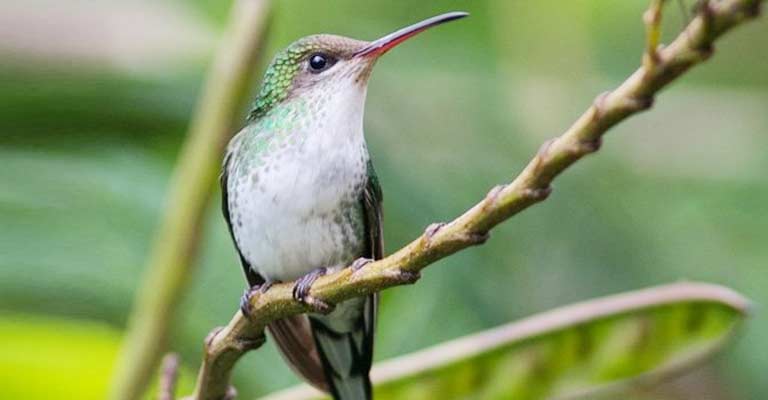
The Vervain Hummingbird faces conservation challenges due to habitat loss, climate change, and human activities.
Preservation efforts focus on safeguarding their habitats, promoting sustainable practices, and raising awareness about the importance of these charismatic pollinators in maintaining ecological balance.
The life history of the Vervain Hummingbird unveils a story of survival intricately woven into the ecological fabric of the Caribbean.
Understanding and appreciating the nuances of its food habits, habitat preferences, breeding rituals, and conservation needs is imperative for ensuring the continued existence of this enchanting species.
10 Fun Facts About Vervain Hummingbird
The Vervain Hummingbird, the world’s smallest bird, is a captivating creature with a host of intriguing features. Here are 10 fun facts that illuminate the charm and uniqueness of this diminutive avian marvel:
- Miniature Marvel: The Vervain Hummingbird holds the title for the smallest bird globally, with males measuring a mere 2 to 2.4 inches (5 to 6 cm) in length. Their petite size is truly awe-inspiring.
- Vibrant Plumage: Male Vervain Hummingbirds boast iridescent plumage in a dazzling array of colors, including shades of green, blue, and fiery red. This vibrant display becomes particularly striking during courtship rituals.
- Forked Tail: One of the bird’s distinctive features is its forked tail, which enhances its agility during flight. This specialized tail aids in precise maneuvers while hovering and feeding on nectar.
- Speed Demons: Despite their tiny size, Vervain Hummingbirds are incredibly agile flyers. They can reach impressive speeds, allowing them to dart swiftly between flowers in search of nectar.
- Courtship Rituals: Male Vervain Hummingbirds engage in elaborate courtship displays to attract females. These displays often involve aerial acrobatics, showcasing the male’s agility and the fiery colors of his throat patch.
- Feeding Frenzy: With a rapid metabolism, these tiny birds need to feed frequently to sustain their energy levels. They primarily consume nectar from various flowering plants, supplementing their diet with small insects and spiders.
- Tiny Nests: Nest construction is a meticulous affair for the Vervain Hummingbird. Their nests are compact cup-shaped structures, often camouflaged amidst foliage on slender branches.
- Parental Collaboration: Both male and female Vervain Hummingbirds actively participate in incubating the eggs and caring for the chicks. This collaborative effort highlights their dedication to successful reproduction.
- Territorial Chirps: While not known for elaborate vocalizations, Vervain Hummingbirds emit soft chirps and buzzes. These sounds play a role in territorial disputes or courtship rituals, adding an auditory dimension to their interactions.
- Conservation Concerns: Despite their resilience, Vervain Hummingbirds face conservation challenges, including habitat loss and climate change. Efforts to raise awareness and implement conservation measures are crucial for ensuring their continued survival.
The Vervain Hummingbird, with its miniature size and vibrant personality, captivates bird enthusiasts worldwide.
These fun facts offer a glimpse into the remarkable adaptations and behaviors that make this tiny bird a truly extraordinary species in the avian kingdom.
Wrapping Up
In the intricate tapestry of avian life, the Vervain Hummingbird emerges as a miniature marvel, captivating with its vibrant plumage, agile flight, and collaborative parenting.
From its diminutive size to the intricacies of nesting, courtship rituals, and conservation challenges, each facet of the Vervain Hummingbird’s existence unveils a story of resilience and adaptation in the tropical realms of the Caribbean.
This enchanting bird, despite its size, plays a vital role in maintaining ecological balance as a pollinator, underscoring the importance of conservation efforts to safeguard its unique place in the natural world.